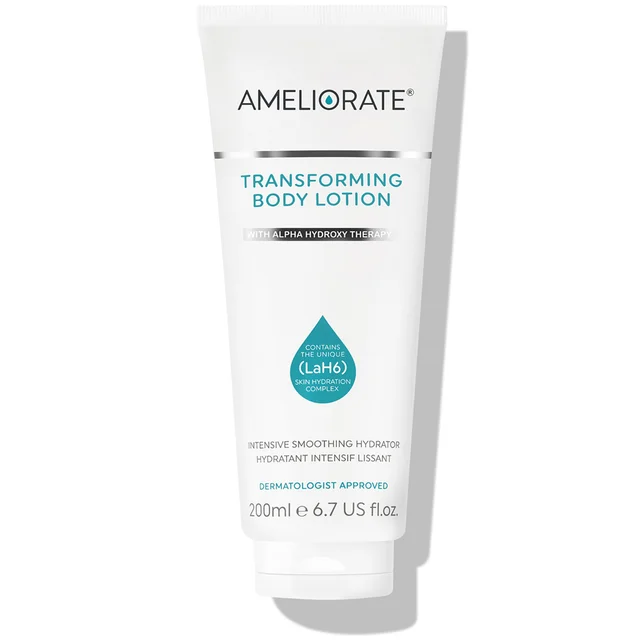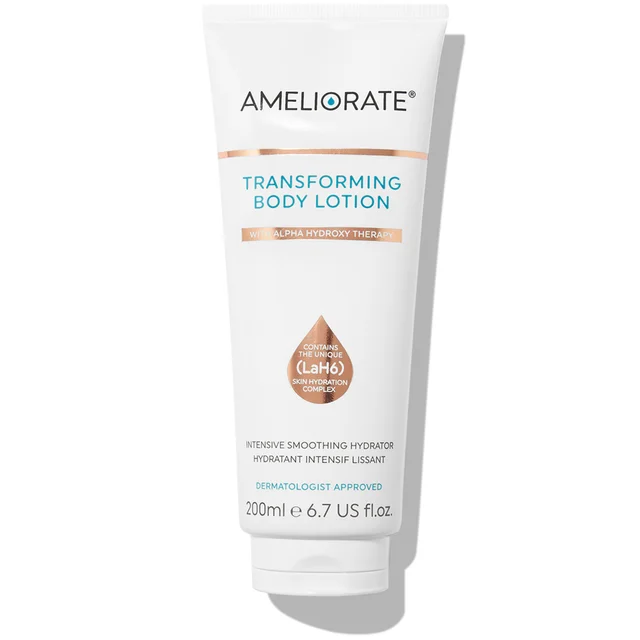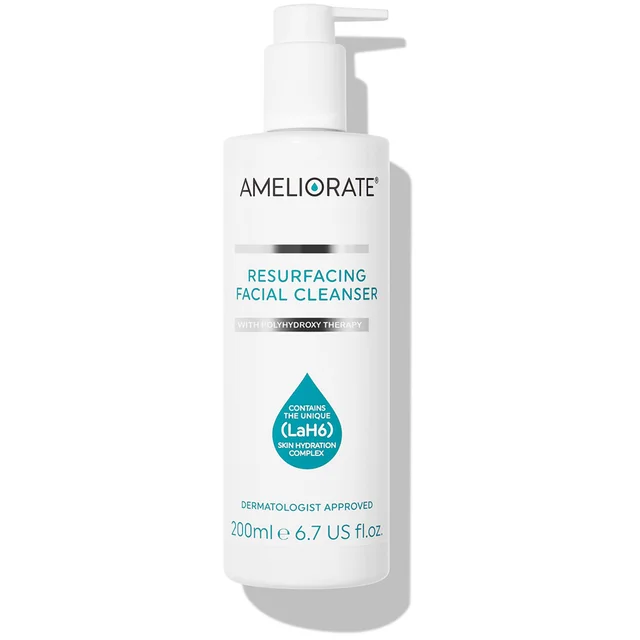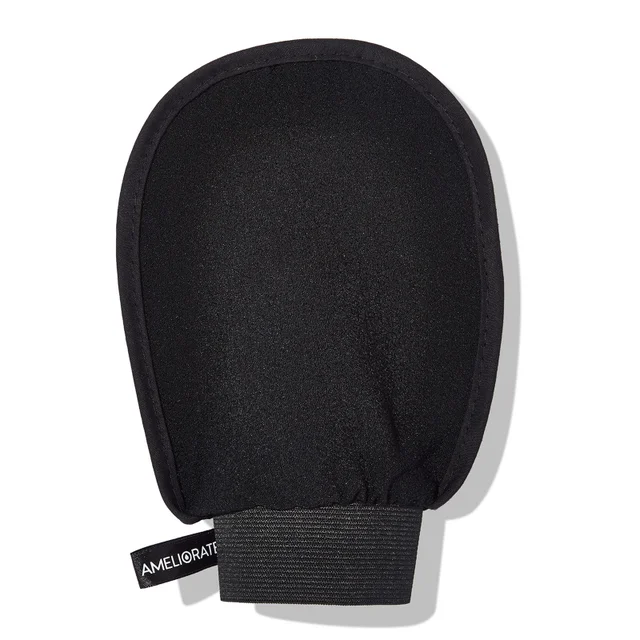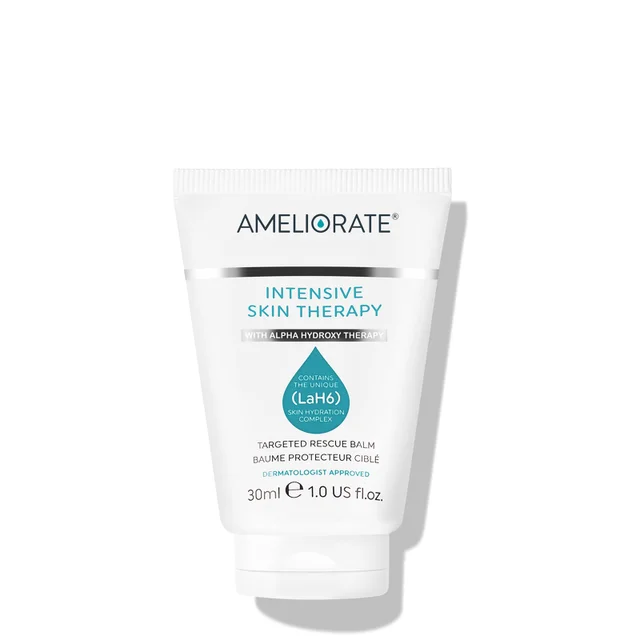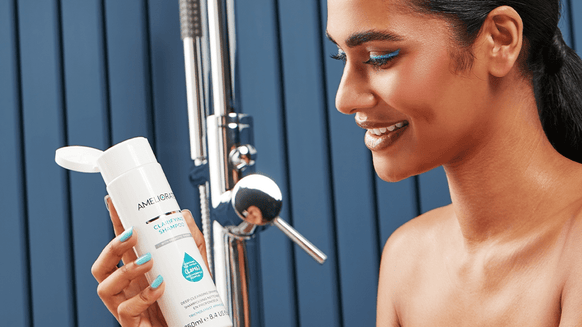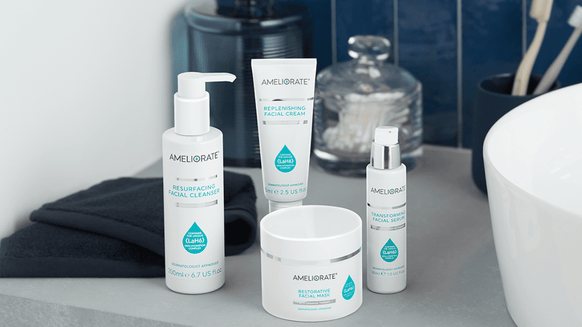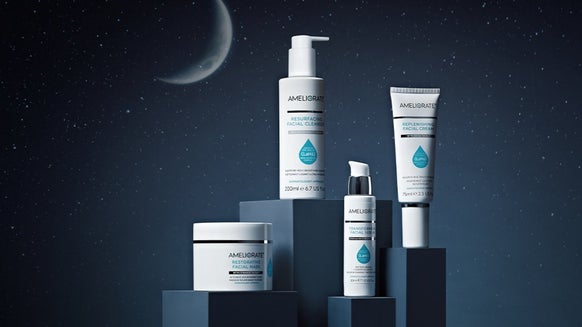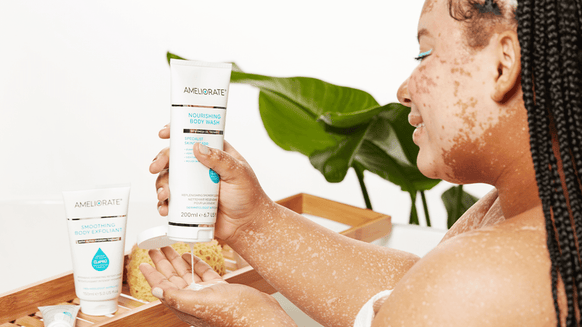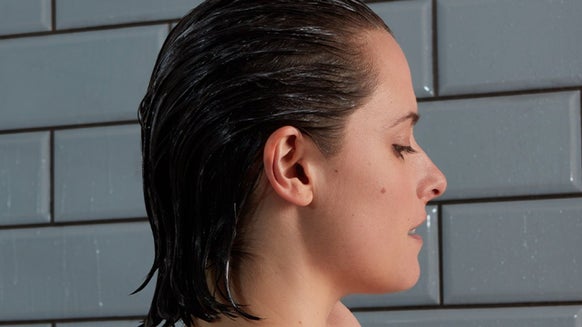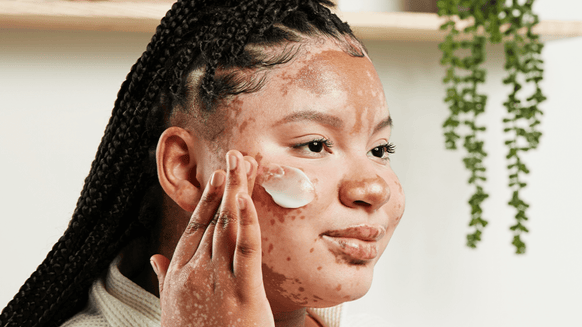Physical Vs Chemical Exfoliation: What’s The Difference?
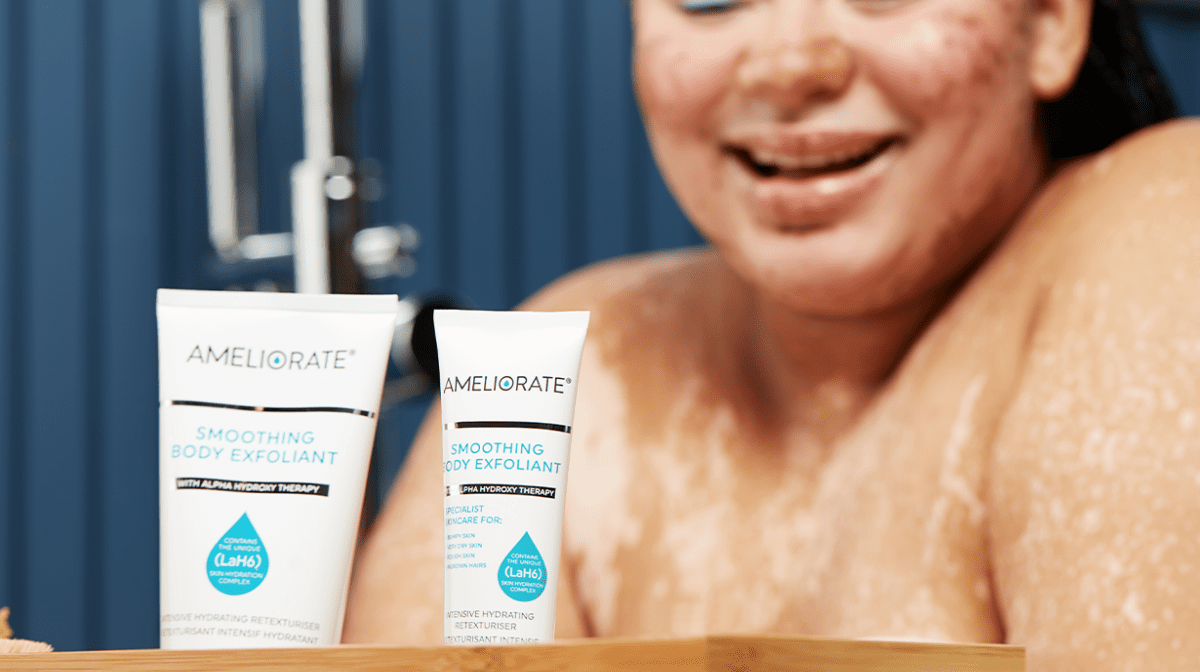
You know that silky smooth, fresh feeling you get after exfoliating? We all know that regular exfoliation works wonders and makes your your skin feel as good as new. But, what is the difference between physical vs chemical exfoliation and which version is right for you?...
What Is Exfoliation?
First thing's first, let's give a quick refresh of what exfoliationactually is. Exfoliation is the action of removing dead skin cells from the skin's surface and can involve a chemical, grainy substance or an exfoliation tool such as a body mitt or brush.
Did you know that your skin naturally sheds dead cells every 30 days to make room for newer, fresher cells? However, sometimes these dead skin cells don't shed completely and this can lead to dry, flaky and dull skin. Exfoliating can help prevent this and gives your skin a little helping hand to reveal new, fresh and brighter cells underneath.
What Is Physical Exfoliation?
Physical exfoliation involves a method that requires manual scrubbing using materials such as exfoliating mitts, cleansing scrubs or dry brushes just to name a few.
However, you should definitely check the ingredients list of your physical exfoliants to make sure that the grains aren't too large or irritating as this can damage your skin and cause transepidermal water loss.
Avoid using ingredients such a fruit kernels/pits and nut shells as these may cause micro tears on the skin, which are little tears in the skin caused by sharp or jagged objects.
Physical exfoliation can be very beneficial on the skin, if done the correct way using the right products. Our Smoothing Body Exfoliant contains biodegradable Bamboo Granules, our iconic LaH6 Skin Hydration Complex and AHA's (we'll get to that later) to both physically and chemically exfoliate above and below the skin's surface and help smooth away KP bumps. Infused with Shea and Cocoa Butters, this is the best physical exfoliator for the body to slough away dead skin cells and reveal amazingly smooth, soft and hydrated skin that looks and feels healthier. As it is a physical exfoliant, we suggest using it 2-3 times per week, massaging onto dry skin before showering or bathing.
What Is Chemical Exfoliation?
Chemical exfoliation involves the use of chemicals including alpha hydroxy acids, retinol and enzymes to gently renew and resurface your skin. They work by breaking the bonds that hold skin cells together. As the bonds are broken, the top layer of skin cells begin to shed, revealing renewed and regenerated skin underneath.
There are three main types of chemical exfoliants, with some stronger than others:
- Alpha Hydroxy Acids (AHAs): These include glycolic, lactic, malic and citric acid and they tend to be derived from fruit but can also be produced synthetically. They're able to dissolve in water, therefore they work on the surface of the skin to help improve texture.
- Beta Hydroxy Acids (BHAs): These acids are oil-soluble, meaning they can penetrate into your pores as well as working on the skin's surface. As they can go deeper into the skin, BHAs may also help to unclog pores and reduce sebum that causes acne and blemishes. Salicylic acid is a common BHA that is used to help treat blemishes.
Polyhydroxy Acids (PHAs): These work in a similar way to AHAs, however the molecules are larger and they can't penetrate the skin as deeply. PHAs are favoured for their less irritating and more gentle properties when compared to other chemical exfoliants. Although they don't penetrate as deep into the skin, PHAs such as lactobionic acid have additional hydrating and antioxidant properties. Our Resurfacing Facial Cleanser and Transforming Facial Serum is rich in PHAs to give gentle, effective exfoliation whilst boosting moisture levels.
Our iconic and bestselling Transforming Body Lotion is supercharged with optimum levels of AHAs including Lactic Acid in our hero LaH6 Skin Hydration Complex, infused into each and every one of our products to exfoliate and renew skin cells whilst drawing moisture into the skin (learn more about our LaH6 Complex here).
Combined with super hydrating Sweet Almond Oil and suited to all skin types, this moisturizing body lotion will leave the skin feeling super soft, smooth and replenished. You can choose from our Original scent, or explore our Limited Edition Fragrances that will leave your skin smelling just as good as it feels. It is gentle enough to be used up to twice per day, as Lactic Acid is a weak acid and will therefore only have an exfoliation effect on the outer layer of the skin and any excess will just help improve the moisturizing properties.
Physical VS Chemical Exfoliation: What Type Is Right For My Skin?
Nowadays, there are so many different methods of exfoliation to choose from, making deciding between physical vs chemical exfoliation even trickier. It's important that you choose the right type of exfoliation technique for your skin type to help minimize the risk of sensitivity and irritation so you can turn your skin's radiance up to the maximum.
- For sensitive skin: If you find that your skin feels irritated or stings after using new products, we suggest using BHAs as these can help calm any redness associated with sensitive skin. PHAs are also favoured for sensitive skin types due to their larger molecule size, and research suggests that they are even suitable for people who suffer with eczema and rosacea!
- For acne-prone skin: Choose BHAs. Salicylic acid is great at helping to clear out pores and reduce breakout-causing sebum.
- For dry skin: Dry skin is often rough and flaky. AHAs including glycolic acid can help break into the surface layer of your skin and allow the rest of your skincare to penetrate better, helping your skin hold on to moisture.
- For mature skin: Not only can AHAs leave skin radiant and glowing, but they can also help reduce the signs of ageing by targeting fine lines and wrinkles.
How Often Should I Exfoliate?
Many cleansers including our Resurfacing Facial Cleanser contain a small amount of resurfacing chemical exfoliants that provide gentle exfoliation with each use. As you're washing these products off, they are perfectly fine to be used on the skin every day.
Products such as exfoliating acids, peels and masks usually contain a higher concentration of ingredients such as glycolic, lactic and salicylic acid and are designed to be used once or twice per week.
As over-using physical exfoliators comes with the risk of causing micro-tears on the skin, we recommend limiting using these products to 1-2 times (3 maximum) per week. However, it all comes down to listening to what your skin needs and if you experience any irritation or sensitivity, give your skin a bit of a break or try switching to a more gentle formula.
Your Smooth Skin Heroes

Heleayner is an Online Content Editor with over four years' experience in the beauty industry. She has a Bachelor of Arts degree in Beauty Promotion and has interned at a number of media publications including British Vogue, Elle and Stylist. She has a passion for all things skincare, fragrance and loves being in nature.

